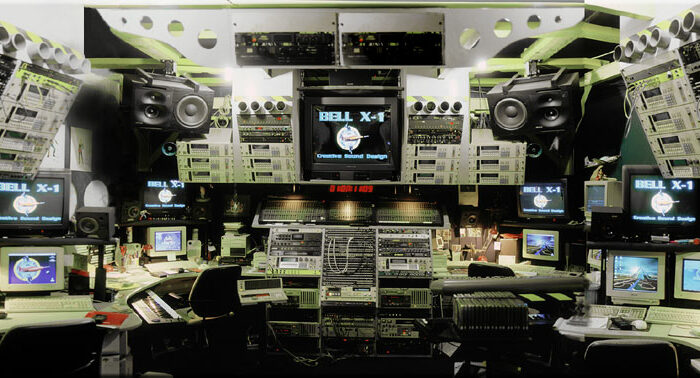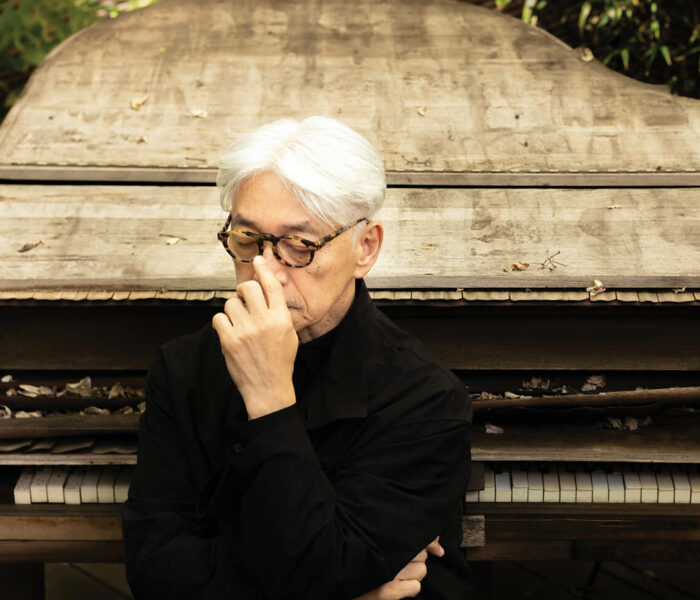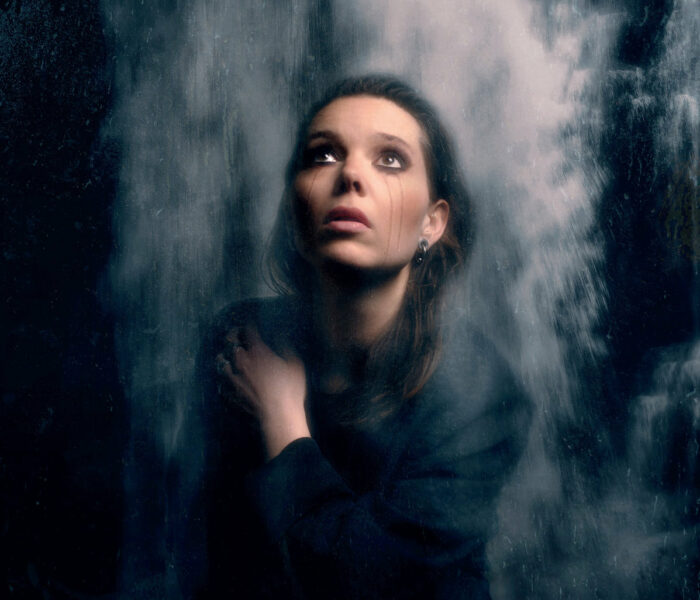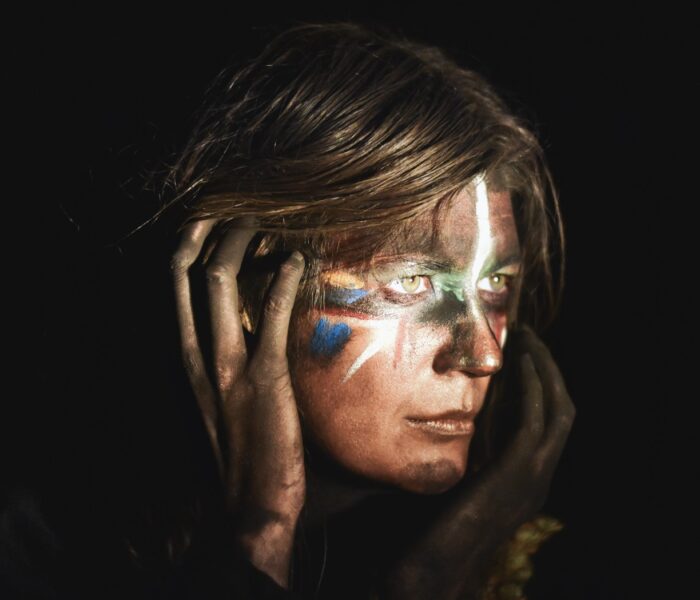Faire venir les jeunes gens au concert et pour cela trouver un lieu accueillant et des contenus qui les attirent, tel est le défi que s’est lancé Laurent Jacquier en fondant son festival Marathon qui se joue chaque année, et depuis 2014, à guichet fermé.
Le rendez-vous annuel est à la Gaîté Lyrique, avec six heures de musique non stop (de 18h30 à minuit et demi), drainant le public d’une salle à l’autre, une alternance permettant les changements de plateau dans un impeccable fondu enchaîné. La proposition artistique de Laurent Jacquier est plurielle, où le monde électrifié des musiques improvisées se frotte aux instruments acoustiques et aux pages plus écrites de la musique. Quelle qu’elle soit, elle est entendue debout, un verre à la main, ou pas, c’est selon.
On est accueilli à 18h30 précises dans le Foyer historique et ses élégantes moulures par la pianiste Trami Nguyen (pianiste de l’ensemble Links) qui vient de se mettre à jouer : c’est l’élément aquatique qui dessine l’horizon poétique de son programme avec Maurice Ravel d’abord, ses Jeux d’eau puis Une barque sur l’océan, troisième pièce du cycle des Miroirs, laissant apprécier la fluidité et l’élégance du geste de la pianiste dans l’acoustique généreuse de ce bel espace. Elle termine cette très (trop) courte séquence par Cordes à vide de Ligeti, l’étude 2 du premier Livre dont les déhanchements rythmiques et harmoniques prolongent le mouvement chaloupé du piano ravélien. Le jeu sur le clavier est plus musclé et la clarinette se teinte des couleurs de la musique klezmer dans le duo YOM (alias Guillaume Humery) et Léo Jassef installés dans ce même Foyer quelques instants plus tard. Leur musique improvisée puise dans le répertoire des musiques de l’Est, entre épanchement nostalgique et rythmique énergétique. La longue cadence virevoltante en souffle continu de YOM mesure l’abattage virtuose du clarinettiste dûment applaudi.


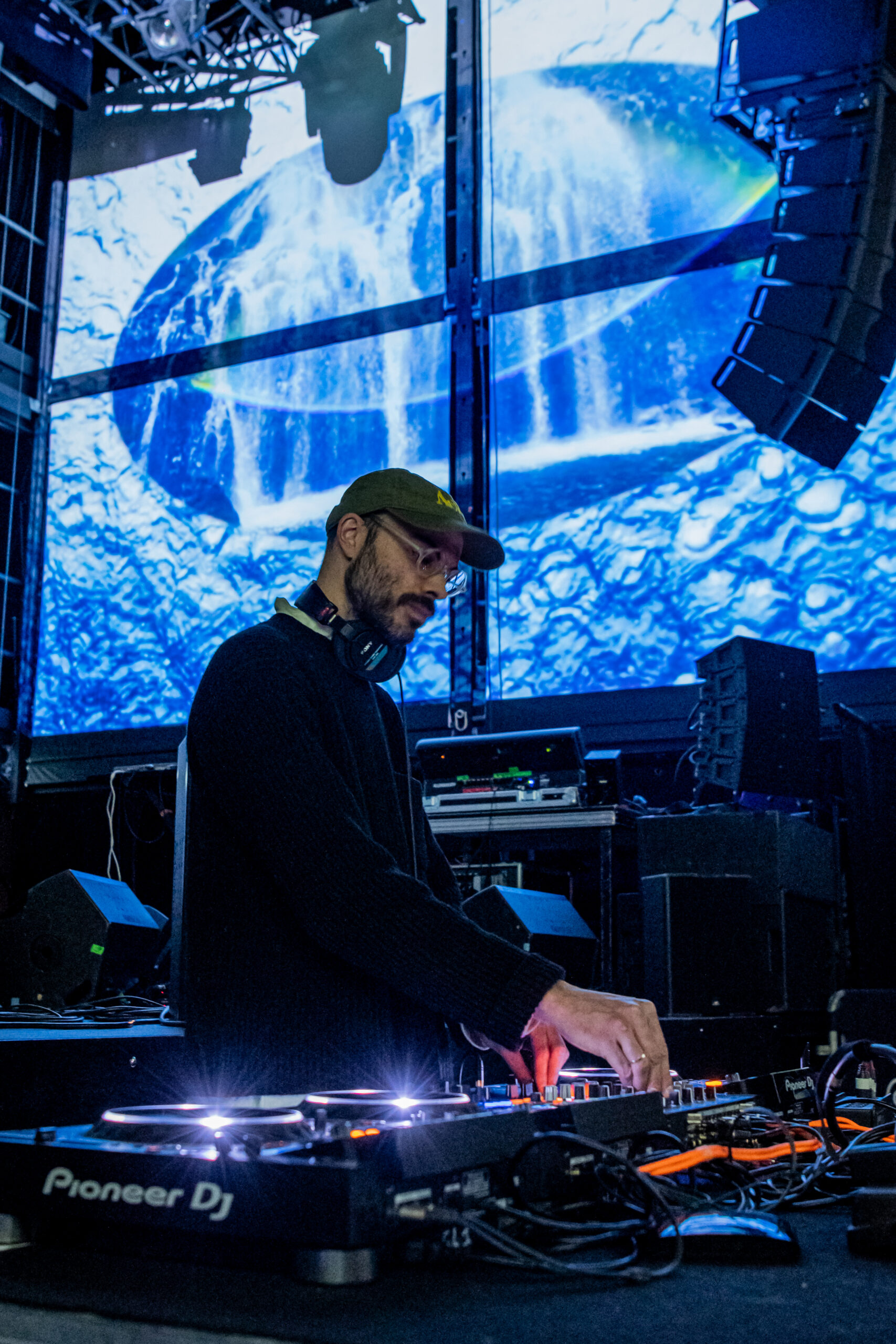
Il faut au DJ Joakim installé en bord de scène l’espace de la Grande salle et les quatre faces du mur pour son show audio-visuel immersif et à la croisée des mondes, « savant mélange de vibrations, de fréquences, et de pulsations », écrit l’artiste polyvalent : pas de titre à cette proposition mais un univers sonore à bas voltage, mêlant field recording, sonorités instrumentales et matières de synthèse. Sur le mur frontal tourne en boucle un montage d’images aussi brèves que disparates tandis que les parois latérales font la part belle au règne animal et aux espèces de tous bords. Plus énigmatique, le mur du fond affiche également du texte en résonance avec l’engagement écologique qui anime le DJ.
Le Cabaret contemporain qui lui succède a investi la scène et multiplié les décibels : le groupe toujours très actif revient avec une musique à danser dont les cinq instrumentistes – guitare et basse électrique, piano, synthétiseur/échantillonneur et percussion – entretiennent le flux sonore avec une frénésie rythmique galvanisante et une recherche toujours très aiguisée de la couleur, celle du piano notamment, joué dans les cordes avec ce geste répétitif et obsédant qui conduit à la transe.
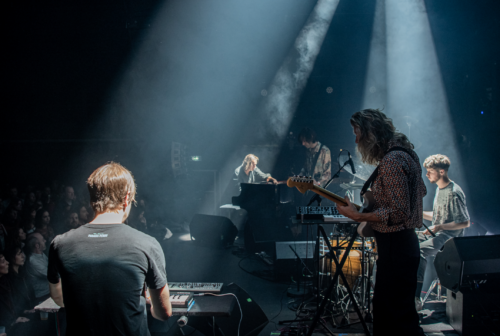
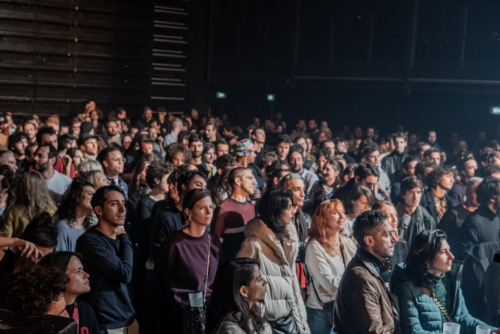
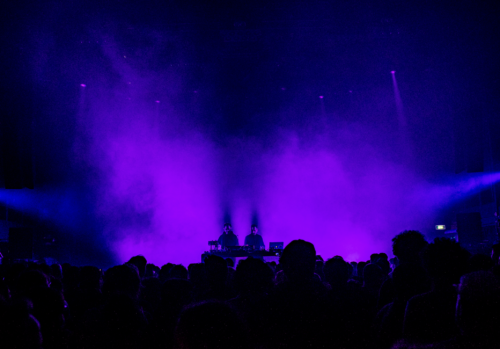
L’ensemble Links, fidèle du Marathon– pianos, percussions et claviers numériques – est programmé dans la Grande salle à 22h. Il s’est installé au centre de l’espace, de manière à être cerné par le public. Laurent Durupt et Trami Nguyen se font face, hyper concentrés et imperturbables, dans Piano Phase de Steve Reich. La pièce (1967) du minimaliste américain relève des premiers essais du compositeur en matière d’écriture instrumentale, lorsqu’il décide de tester ses procédés de phasage/déphasage avec des instruments acoustiques. Les deux pianos débutent à l’unisson puis se désynchronisent progressivement, faisant émerger toutes sortes de figures rythmiques résultantes bien que non écrites sur la partition, dans un mouvement de transformation incessant autant que envoûtant. Beaucoup moins connue et d’autant plus saisissante, la pièce Proverb, plus récente (1995), aborde de nouveaux horizons dans l’esthétique de Reich. La pièce invite sur scène les chanteurs de Sequenza 9.3 (trois sopranos et deux ténors), deux synthétiseurs et deux vibraphones. Fervent de musique ancienne, Reich se tourne vers les premières polyphonies du Moyen-âge, puisant directement au modèle de l’organum à quatre voix de Pérotin dont il retient l’esprit sinon la lettre : notes tenues (instrumentales ou vocales) sur lesquelles s’inscrivent des figures plus animées, chantées ou relayées par les deux vibraphones. Rémi Durupt est à la direction, réglant très précisément les mécanismes de cette belle architecture sonore. Les voix très pures de Sequenza 9.3 séduisent, tout comme l’arrangement instrumental, écoutés avec la même attention curieuse du public, plus désemparé peut-être mais tout aussi conquis par l’excellence de la réalisation sonore.



On est moins séduit par le duo de percussions Ding Dong (alias Cosmic Neman et Guillaume Quéméré Lantonnet) dont on attendait davantage pour mettre en valeur le potentiel exploratoire de leurs sets instrumentaux déployés dans le Foyer moderne. Si la performance électroacoustique d’Alexandre Bazin pâtit de la rumeur ambiante de ce même Foyer où converge tout le public, Neel et Donato Dozzy, alias Voices From the Lake, désormais habitués des programmations marathoniennes, retiennent toute notre attention. Avec force machine à fumée venant flouter les bords de scène de la Grande salle, les deux artistes sonores conquièrent progressivement leur auditoire qu’ils embarquent au rythme de leur « musique ambient » – temps étiré et ciselure des figures sonores – qui, comme l’explique Brian Eno, « peut être activement écoutée ou ignorée », à l’heure tardive de la performance qui vient clôturer ce Grand soir.
Michèle Tosi
Paris, Gaîté Lyrique, le 3-12-2022
Marathon!
Avec : Trami Nguyen (Maurice Ravel et György Ligeti) ; DJ Joakim ; Yom et Léo Jassef (piano et clarinette) ; Cabaret Contemporain ; Ding Dong ; Ensemble Links et Sequenza 9.3 (Steve Reich) ; Alexandre Bazin ; Voices from The Lake.
Photos © retross.e



)
